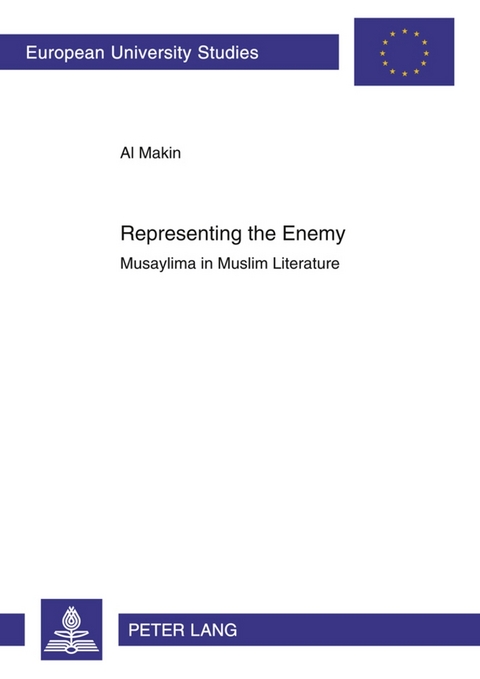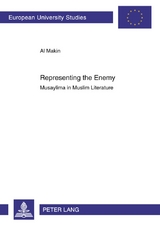Representing the Enemy
Musaylima in Muslim Literature
2010
Peter Lang Gmbh, Internationaler Verlag Der Wissenschaften
978-3-631-60862-3 (ISBN)
Peter Lang Gmbh, Internationaler Verlag Der Wissenschaften
978-3-631-60862-3 (ISBN)
This work claims that Musaylima served as a prophet for his own people in Yamama in more or less the same way as the Prophet Muhammad in Mecca and Medina. However, unlike Islam, Musaylima's religious movement did not survive. Here, a complete story of Musaylima - his claim of prophethood, qur'an (reading), religious activities, followers, opponents, and defeat - is reconstructed. A critical reading of the sources that contain the accounts of Musaylima is performed. Additionally, this study reveals that the remaining fragments of Musaylima's qur'an bear substantial similarities to the early Meccan verses of the Qur'an - in terms of diction, style, and pattern.
To formulate the findings of this study, there was more than one prophet in the sixth-seventh century of the Arabian peninsula, as Umayya b. Abi Salt, Abu 'Amir, Tulayha, Sajah, Aswad, and Musaylima claimed prophethood. There was more than one qur'an, as Musaylima also revealed his own qur'an. It is possible that other prophets also did so. There was more than one mosque (masjid), since the followers of Abu 'Amir established their own, as did those of Abu Qays. So did the followers of Musaylima. There was more than one Abrahamic Hanif monotheistic movement in the Hijaz and around the region, as some figures assumed the same mission.
To formulate the findings of this study, there was more than one prophet in the sixth-seventh century of the Arabian peninsula, as Umayya b. Abi Salt, Abu 'Amir, Tulayha, Sajah, Aswad, and Musaylima claimed prophethood. There was more than one qur'an, as Musaylima also revealed his own qur'an. It is possible that other prophets also did so. There was more than one mosque (masjid), since the followers of Abu 'Amir established their own, as did those of Abu Qays. So did the followers of Musaylima. There was more than one Abrahamic Hanif monotheistic movement in the Hijaz and around the region, as some figures assumed the same mission.
Al Makin earned his BA from the State Insitute of Islamic Studies, Sunan Kalijaga Yogyakarta, Indonesia (1996), his MA from McGill University, Montreal, Canada (1999), and his Ph.D. from Heidelberg University, Germany (2008). Between 2009 and 2010 he was a research fellow at the IKGF (International Consortium for Humanities) «The Dynamics in the History of Religions between Asia and Europe», Ruhr University Germany. He is currently a lecturer at the State Islamic University Sunan Kalijaga Yogyakarta, Indonesia.
Contents: Musaylima - Early Islamic Biography - Prophethood - False Prophet - Middle Eastern Studies - History of Early Islam - Yamama - Warly Islamic literature - Critical Study of Early Islamic Sources.
| Erscheint lt. Verlag | 23.9.2010 |
|---|---|
| Reihe/Serie | Europäische Hochschulschriften / European University Studies / Publications Universitaires Européennes ; 106 |
| Verlagsort | Berlin |
| Sprache | englisch |
| Maße | 148 x 210 mm |
| Gewicht | 440 g |
| Themenwelt | Geisteswissenschaften ► Religion / Theologie ► Islam |
| Sozialwissenschaften ► Ethnologie ► Allgemeines / Lexika | |
| Schlagworte | Enemy • Historiography • Islam • Literature • makin • Middle Eastern Countries • Musaylima • Muslim • prophethood • representing |
| ISBN-10 | 3-631-60862-4 / 3631608624 |
| ISBN-13 | 978-3-631-60862-3 / 9783631608623 |
| Zustand | Neuware |
| Haben Sie eine Frage zum Produkt? |
Mehr entdecken
aus dem Bereich
aus dem Bereich




